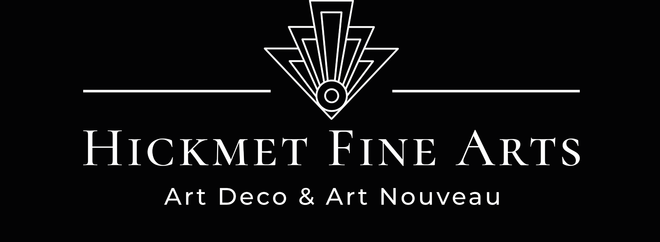A delightful late 19th Century gilt bronze study of a naked Art Nouveau beauty standing beside a treestump with a dragonfly by her foot exhibiting excellent colour and detail, signed Aug Moreau
ADDITIONAL INFORMATION
Height: 30 cm
Width: 16 cm
Depth: 13 cm
Condition: Excellent Condition
Circa: 1890
Materials: Bronze
Book Ref: Bronzes of 19th Century
Page No: 505
SKU: 9270
ABOUT
Auguste Moreau
Auguste Moreau (born in Dijon , the death in Malesherbes) was a French sculptor. The third son of sculptor and painter Jean Baptiste Moreau and the younger brother of sculptor Hippolyte Moreau and Mathurin Moreau, Auguste initiated himself to sculpture along with his older brother Mathurin. His subjects were primarily genre scenes, pastorals, and allegories; his style was realistic and graceful, revealing his relation to the other members of the Moreau dynasty. The similitude of names sometimes provokes confusion in the attribution of certain works signed without first initials.
The artist was taught by his father and was introduced by him in the craftwork of sculpture. We can assume that he continued his education at one of the popular art schools in the French capitol. In his early life Auguste Moreau visited the "École des Beaux-Arts". Since 1968 this famous academy has been called "École nationale supérieure des beaux-arts". It was founded on April 20, 1797 as, École spéciale de peinture, de sculpture et d`architecture" and was officially acknowledged by the French King Louis XVIII in 1819. The most renowned schools are located in the district Saint-Germain-des-Prés and extends over an area of approximately 2 hectare. In the past there was the Augustinian monastery "couvent des Saints-Augustins" at this location. Even today its little chapel is preserved. The studies at the academy are always held in studios. He probably knew few of the famous artists, who graduated at the "École des Beaux-Arts". Among them are Henri Matisse and the carver Georges Gimel.
Auguste Moreau even developed a special style of filigree figures during his further artistic training and development. His works were first exhibited in 1861; therefore he became well-known very early. In the 19th century the French capitol had several locations of famous and great world`s fairs, at which also artists showed and presented their works. With the help of these exhibitions a lot of Moreau`s colleagues became famous and we can assume that he himself knew them and associated with them. The first French world`s fair was held in 1855. For the first time there was a stage for the contemporary and modern artistic trends and a special pavilion, the "Palais des Beaux-Arts", was built for that. Additional world`s fairs took place in 1867, 1878 and 1889. The reason for the fair in 1889 was the famous Eiffel Tower had been built. It still exists and became the international symbol of Paris.
The smaller world exhibition "Exposition internationale des Arts Décoratifs et industriels modernes" took place in 1925 and was dedicated to arts and crafts and industrial design. The exhibition became a great stage for the international avant-garde of the modern and fine arts and therefore the artistic trend Art deco is named after it. Auguste Moreau had points of contact with the arts décoratifs, but he was more interested in the Art Nouveau. He became an important representative of this artistic trend that is marked by its floral motifs and ornaments, curved lines and the demand to melt life together with art. Auguste Moreau worked in this style, designing filigree sculptures, figures and busts that seem very naturally and detailed. The extraordinary artist died in 1917.
For more Moreau sculptures please click on our link - Art Nouveau Sculptures















